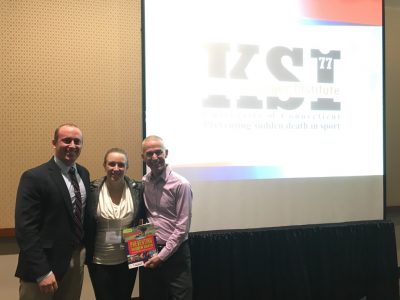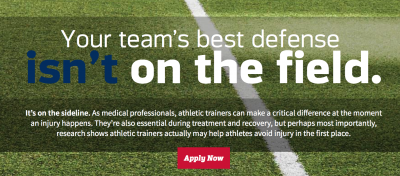By Rachel Katch, MS, ATC, Associate Director of Occupational and Military Safety
On October 13th & 14th, students and staff from the Department of Kinesiology at the University of Connecticut (UConn) attended the annual New England American College of Sports Medicine (NEACSM) conference in Providence, RI titled, “Advancing the Profession – One Step at a Time. Many members of KSI used this platform to present various topics of their interest. Yuri Hosokawa presented on LPS-induced TLR-4 activation during prolonged running and cycling events in hot and humid environments. Rachel Katch presented on the use of the heat stress score and how those can predict preparedness to run in an outdoor race. Gabe Giersch presented her master’s thesis from James Madison University which is titled, The Effect of the CYP1A2 -163 C>A Polymorphism on the Metabolism of Caffeine and Effect on Performance. Abigail Colburn presented her bachelor’s degree research about hydration knowledge and perception in DI NCAA male soccer athletes as well as the influence of water vessel on consumption and perception. Dr. Douglas Casa, Dr. Rebecca Stearns, and Dr. William Adams presented on policy change in sport, epidemiology of sudden death in sport, how policy changes can save lives and protect athletes, and how to initiate policy changes in secondary school athletics.

At the NEACSM Expo, UConn’s Department of Kinesiology provided information regarding its new Exercise Prescription Online Graduate Certificate Program. This program is for individuals interested in transitioning into the field of Exercise Science, Sports Medicine, Kinesiology, Personal Training, Exercise Physiology, and Health and Fitness. Additionally, this program is targeted at individuals who are looking to enhance their current job credentials or earn degree advancement. This is a 9-credit, three course online graduate certificate that can help advance knowledge base in a very dynamic field, preparing individuals to take their career to the next level.
At the completion of this online certificate program, students will:
- Learn about the nuances of administering exercise stress tests in healthy and unhealthy populations.
- Become proficient in evaluating a person’s overall health prior to beginning of an exercise program and throughout program maintenance.
- Understand how to incorporate aerobic, resistance, concurrent, neuromotor and flexibility exercise appropriately into exercise plans.
- Learn about the underlying processes involved with chronic diseases or special health conditions.
- Become adept at using the F.I.T.T. (Frequency, Intensity, Time, Type) principle of exercise prescription to prevent, treat, and manage these conditions.
- Learn how to develop individualized exercise prescriptions to increase and promote physical activity, fitness, strength, endurance, and flexibility to optimize health and meet athletic performance goals.
- Learn how to use behavioral strategies to increase adherence with exercise plans.
- Become adept at recognizing common medication classes likely to be encountered by health/fitness professionals, and how they may influence the exercise responses.
The application deadline for the Spring 2017 semester is December 2nd, 2016. More information and applications can be found online at http://exerciseprescription.uconn.edu.





